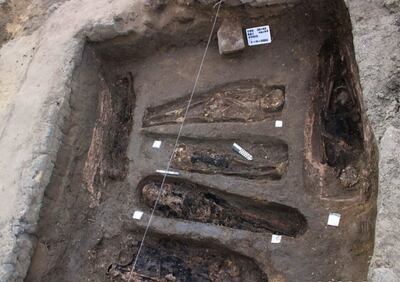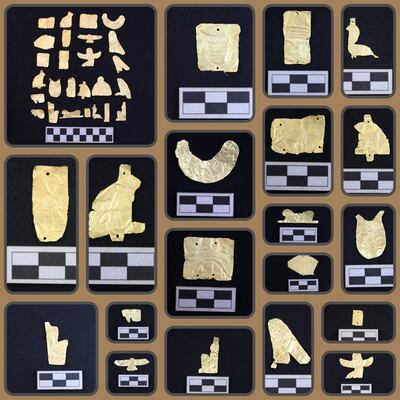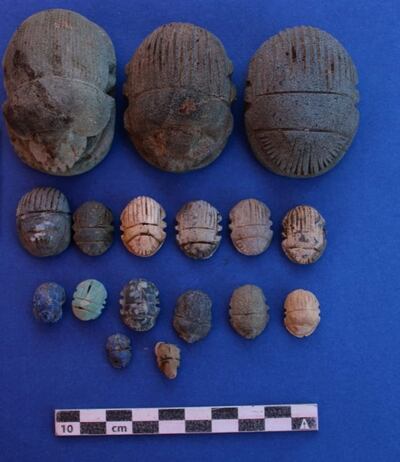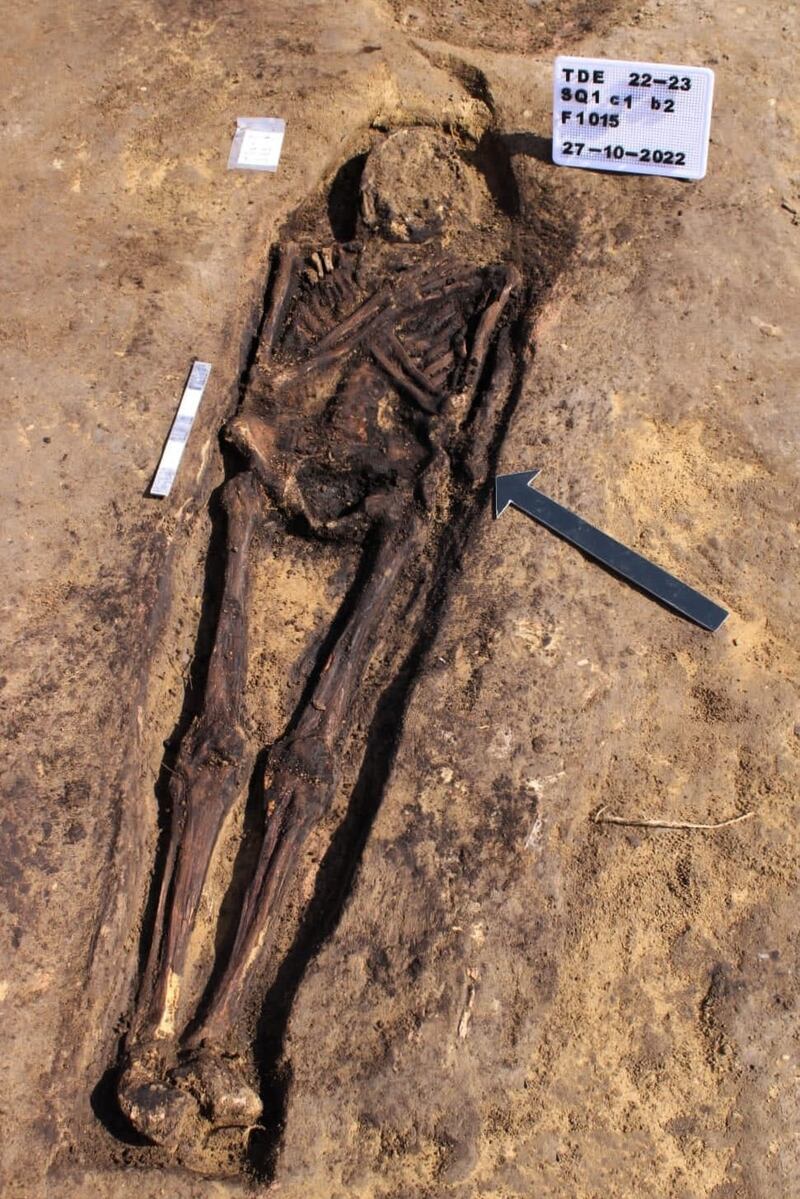Graves dating back to between 664 BC and 332 BC have been discovered in the Nile Delta by an Egyptian archaeological team.
A statement from the country’s Supreme Council of Antiquities said the find was monumental for the city of Damietta and would “rewrite its history”.
Also unearthed were a number of gilded chips which were intended to decorate the tombs in the area.

The chips took the shape of various ancient Egyptian deities, including Isis, Heqat and Bastet, the council statement said.
Additionally, a gilded chip in the falcon form of the God Horus was found.
A number of funerary amulets of varying shapes and sizes were unearthed. The amulets were in the shape of scarabs and of other forms and symbols relating to ancient Egyptian deities.

The unearthed graves were divided into limestone structures, presumably for more affluent Egyptians, and simple ditches used for burying those of low birth.
The tombs most likely date back to the 26th dynasty of ancient Egypt, the last native ruling family before the Persian conquest of 525 BC, the statement said.
The council said it would continue excavations of Tell El Deir (Hill of the Monastery), where it expects to find more relics buried beneath the area’s thick sands.
The site has been instrumental for the study of burial and funerary customs during Egypt’s Greco-Roman period.








